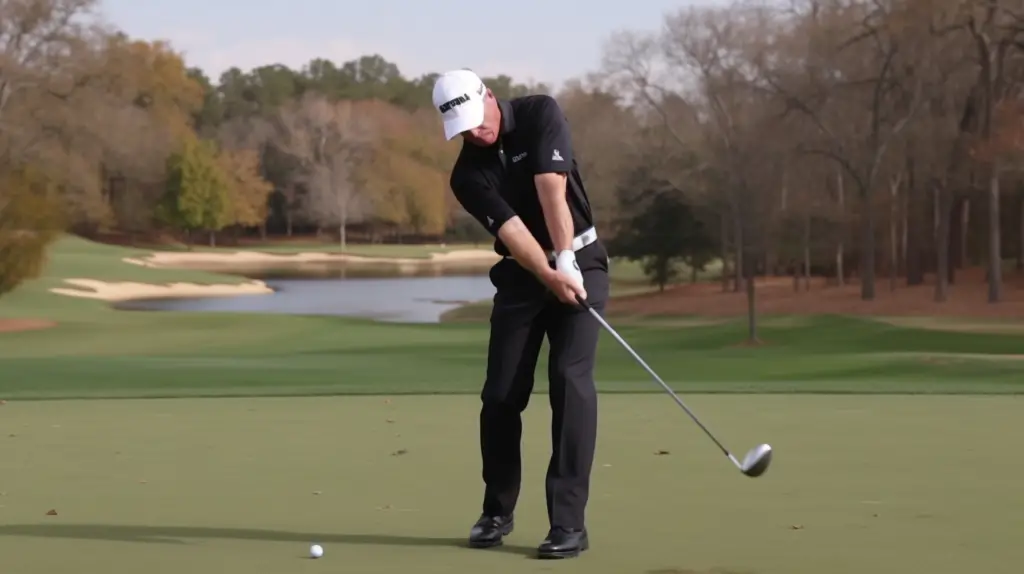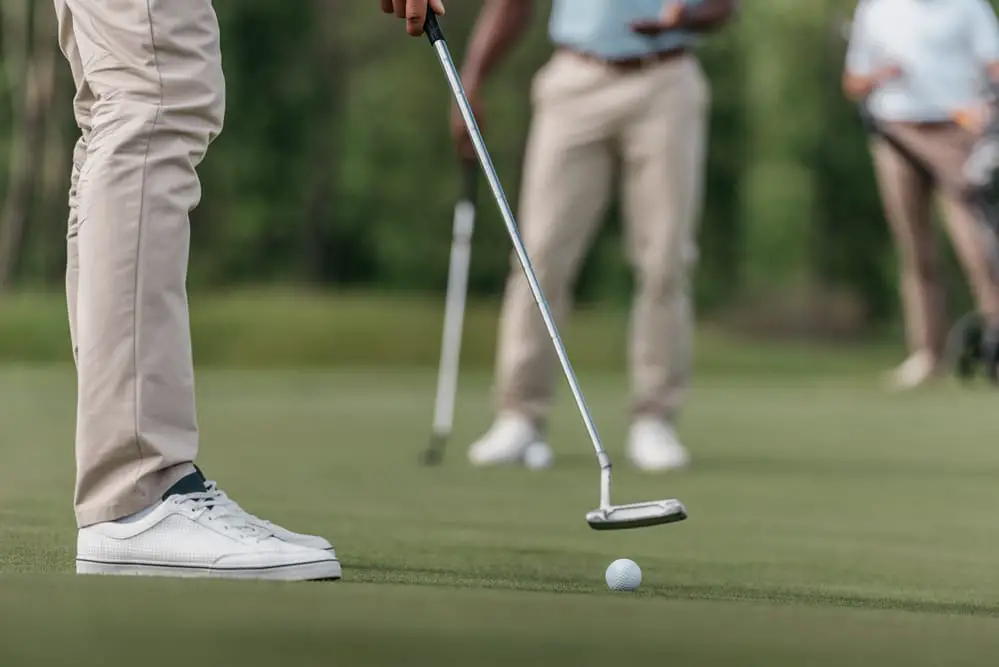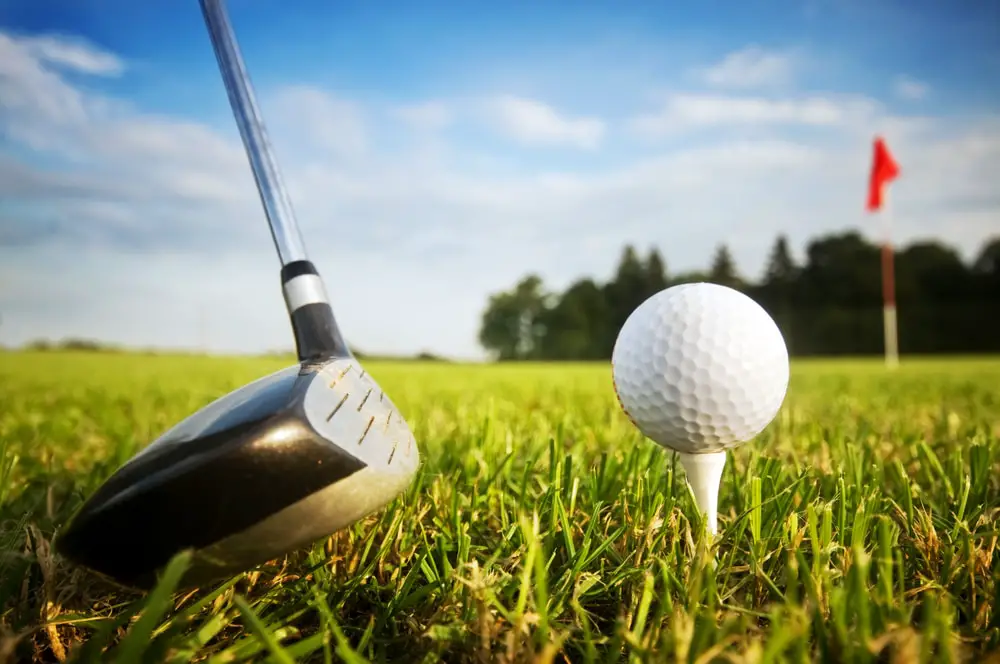Last Updated on October 26, 2023
Golfers, have you ever struggled to keep your left arm straight in golf? It’s a common issue that can lead to an inconsistent swing and poor ball striking. Never fear – with the correct methodology, mastering this technique doesn’t have to be complicated. In this blog post, we’ll discuss how mastering the basics of keeping your left arm straight during a golf swing is key to improving accuracy and consistency. We’ll also provide some tips on developing awareness of your position, practising drills for strengthening the muscles involved, focusing on the connection between body parts while swinging and analysing your performance using video analysis. So if you’re ready to take control over keeping your left arm straight in golf, then let’s get started.
Table of Contents:
- Master the Basics of a Straight Left Arm in Golf
- Develop an Awareness of Your Left Arm Position
- Practice with Drills to Strengthen Your Left Arm
- Focus on Keeping Your Left Arm Connected to Your Body
- Analyse Your Swing with Video Analysis
- Conclusion
Master the Basics of a Straight Left Arm in Golf
A straight left arm is essential for consistent, powerful golf swings. To maximise the power of your swing, stay mindful of how your left arm is moving throughout. Developing an awareness of your position and practising with drills will help strengthen this important part of your game.
If all else fails and nothing seems to work when trying various drills or techniques related to mastering a straight left arm position, don’t worry. Analysing video footage taken while swinging can provide invaluable insight into what needs improvement as well as show exactly what adjustments must be made going forward for better results next time around. It may seem intimidating at first, but once familiarised with basic terminology used within golf instruction videos and lessons online today, anyone can become proficient quickly enough, so give yourself some credit here too.
Develop an Awareness of Your Left Arm Position
Maintaining a rigid left arm is integral to executing an effective golf swing. As right-handed players, our left arms are known as our “lead” arms and must stay connected to our bodies throughout the entire swing for us to hit shots consistently. It can be difficult for some golfers to keep their lead arm straight, but with practice and awareness, it can be done.
The first step in achieving proper left-arm positioning is getting your grip correct at the address position. This will ensure that your wrists hinge correctly during the backswing, so you don’t create any unwanted bends or breaks in your left arm. Grip the club so that your hands are slightly overlapping and with your thumb pointing towards your right shoulder. When gripping the club, ensure your thumb is angled towards your right shoulder, and there’s a slight flex in the elbow joint; this will let you swing through with less tension in your upper body.
Once you have established a good grip, focus on keeping your lead elbow close to its original position throughout the entire backswing and downswing phases of the golf swing – from start to finish. This means not allowing it to move away from its starting point or rotate around itself during either phase of the swing; doing so will cause an inconsistent ball strike resulting in poor shot quality and distance control. Additionally, try not to let it dip too low, as this could cause an outside-in path which often leads to slicing or hooking shots off target.
Practice with Drills to Strengthen Your Left Arm

Right-handed golfers should focus on maintaining a straight left arm connected to the body throughout their swing for optimal stability, consistency and accuracy in shots; this can be achieved by strengthening the muscles of your left arm with drills and practice. This helps create stability, consistency, and accuracy in your shots. To achieve this position, you need to strengthen the muscles of your left arm through drills and practice.
One drill that can help you develop proper left arm positioning is called “The Box Drill”. With this drill, you will start with your arms at shoulder height and bent 90 degrees at both elbows while keeping your wrists cocked back as if ready to hit a shot from an address position. From there, move your hands down towards the ground in one motion until they reach waist level before returning them back up into starting position again in one fluid motion without bending either elbow or wrist during the exercise. Do 10 reps of this drill daily for the best results over time.
By utilising resistance bands during practice swings or even when hitting balls on the range or course, you can effectively strengthen your lead arm. Attach one end of the band to a stationary object, such as a tree branch or post near where you are practising and loop it around each hand so that it runs along both sides of your body without hindering the full range of motion throughout each swing repetition. This helps build strength in those small stabilising muscles located within our forearms which are key for making contact with the ball striking pure shots off tee boxes, fairways, greens, etc. Ensure to include this in your golf practice sessions if you’re looking to gain an edge.
Focus on Keeping Your Left Arm Connected to Your Body
Keeping your left arm connected to your body is essential for good golf swing mechanics. For righties, it’s important to keep the left elbow tucked in close to your body all throughout the swing. This helps create a proper sequence of motion and keeps you from overusing your arms in an attempt to hit the ball farther.
The first step in ensuring that you keep your left arm connected is getting into a proper address position with both arms straight and relaxed. Your lead shoulder should be slightly lower than your trail shoulder, creating width between them. Make sure that there is only a slight bend in both elbows at the address; any more will cause tension which can negatively affect the quality of shots struck during play.
At the top of your backswing, strive to maintain a tight connection between your left arm and torso while allowing for some wrist hinge action at the impact point on the downswing. This will guarantee maximum club face control when striking shots towards the target. Be conscious not to let too much space form between the lead elbow and side during the backswing, or it could be difficult to stay connected through the contact zone; once you hit the apex of your swing arc, make sure that the lead elbow stays close enough so it can remain totally straight all way until just before making contact with a golf ball. Utilise this technique regularly for improved accuracy and distance in your game.
Once ready for the downswing phase, focus on using big muscles like the chest and shoulders instead of small ones (arms) – this will help create a wider swing arc and promote better ball-striking consistency because less effort required by the player overall. It’s also key not to forget about maintaining correct grip pressure: if the grip pressure is too light, then the arms may have a tendency to move away from the body during the transition phase leading up strike – conversely, if the grip pressure is too tight, then wrists won’t be able to rotate properly resulting poor shot results due lack power generated by full extension at the impact point.
Analyse Your Swing with Video Analysis
Video analysis is a powerful tool for golfers to pinpoint areas of improvement in their left arm position during the swing. By analyzing your swing with video, you can clearly see where and how you can enhance your use of the left arm for optimal performance. If you want to take advantage of this valuable resource, click here to make a video and start refining your golf game.
When addressing the ball, it’s important to keep your left arm straight, as this will help create width in the backswing and ensure that the clubface remains square at impact. To do this, focus on keeping your lead elbow close to your body while maintaining good posture throughout the entire motion of the swing. This will also help ensure that you stay connected with both arms working together throughout each part of the swing.
During practice drills, it’s important to focus on strengthening your left arm by using proper grip techniques and wrist hinge movements so that when you go into a full swing motion, it feels natural and comfortable. The right-handed golfer should make sure their lead hand is slightly bent at the address but fully extended through impact while keeping their shoulder tucked in towards their chest for optimal results.
Conclusion
Golfers who can keep their left arm straight throughout the swing will have a better chance of consistently striking the ball with power and accuracy. Keeping your left arm connected to your body is key, so practice drills that emphasise this connection while also focusing on strengthening your muscles for stability. With proper technique, you’ll be able to maintain a steady position during each golf shot and ultimately increase the quality of your game. By taking time to master these basics about keeping your left arm straight in golf, you’ll improve both confidence and consistency when it comes time to hit those long drives down the fairway.


